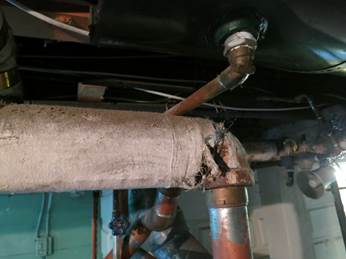Our Asbestos Solutions:
- Risk Assessments
- Site Inspections
- Air and Bulk Sampling
- Project Management
- Oversight of Abatement Activities
- Asbestos Management Plans
What is Asbestos?
Asbestos is a series of natural silicate minerals exploited commercially for their physical properties. Asbestos became very popular among manufacturers and builders because of its sound absorption, average tensile strength, and its resistance to heat, electrical and chemical damage. The inhalation of asbestos fibres can cause serious illnesses, including malignant lung cancer, mesothelioma and asbestosis.
The six types of asbestos are :
- Chrysotile
- Amosite (Amphibole)
- Crocidolite
- Tremolite
- Actinolite
- Anthophyllite
Chrysotile has been used more than any other type (around 95% of the asbestos found in buildings). Chrysotile commonly occurs as soft friable fibers. Products manufactured with chrysotile include:
- Drywall and joint compound
- Texture coats and plaster
- Vinyl floor tiles, sheeting and adhesives
- Roofing tars, felts, siding and shingles
- Transite panels, siding, countertops and pipes
- Acoustic ceilings
- Fireproofing
- Caulking, gaskets and packing
- Fire doors
- Thermal pipe insulation
As asbestos fibers get smaller and lighter, they more easily become airborne and human respiratory exposures can result. Friability of an asbestos-containing material means a material that is so soft and weak in structure that it can be broken with simple finger crushing pressure. Friable materials are the # 1 concern in an assessment because of their ease of damage. Non-friable materials containing asbestos are the ones that cannot be broken with simple finger crushing.
Amosite is used as a fire retardant in thermal insulation products and ceiling tiles.
Anthophyllite asbestos can still be found in a variety of construction materials and insulation materials.


